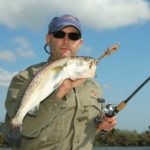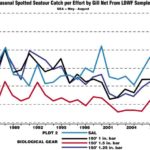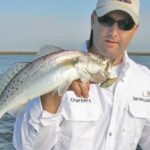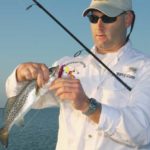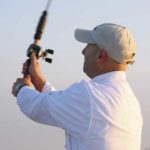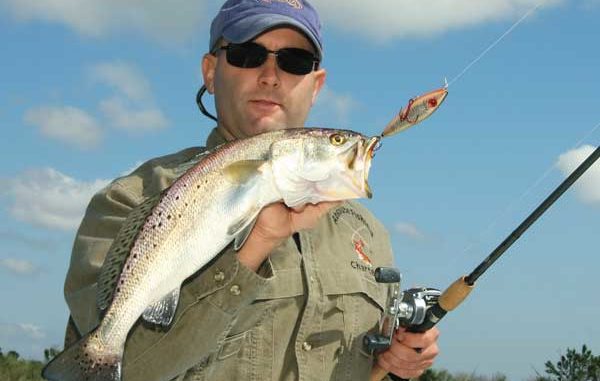
The corners of the state will be hotspots this year, but the areas in between will certainly hold their own.
If you knew the Saints were going to the Super Bowl before the season even started, would you be me more or less likely to sit around the television on Sunday afternoon? I would have to think I would be less likely to watch any of the games except for the Super Bowl. I’ve seen the Saints play games before. I’ve never seen them play the game.
Knowing the final outcome of a season would make each game less interesting because all the drama would be gone, all the cursing would be in vain and all the excitement would be sucked out of cheering on the NFL’s perennial underdog.
However, the uncertainty of each season doesn’t stop all the talking heads on television from predicting what it has in store. How many of them wrongly predicted the Saints to be in the Super Bowl last season?
Is it better to know and not go, or is it better to not know and go?
Our desire to know the future is too strong to ignore, though. That’s why those talking heads have broadcast jobs. They get paid to predict what they think is going to happen, and people even make bets based on this supposed expert analysis.
Predicting the outcome of NFL games is a risky business. Predicting how good the 2008 trout season is going to be in Louisiana is just as risky. That doesn’t stop people from wanting to know, so Louisiana Sportsman did its dead-level best to pin down a few real folks with real answers rather than talking heads spewing bigheaded banter.
Marty LaCoste runs Absolute Fishing Charter out of Bayou DuLarge, and from a layman’s perspective rather than a scientific one, he thinks 2008 could be a really consistent year for trout fishing in lower Terrebonne Parish.
“Back in late October, November and the beginning of December last year,” he said, “we had some exceptional fishing down in DuLarge. The limits of trout were pretty much a guarantee every morning. They were stacked up in schools, and we had our typical size of 12- to 16-inch fish.”
Other than relying on his recent experiences, LaCoste points out that trout fishing has steadily improved in the DuLarge area since Hurricane Rita in 2005. Along with the improving trout fishing, LaCoste has also noted that the size of the trout is improving.
“I think we’re seeing more big trout down here,” he said. “We’re known more for keeper-sized fish in southern Terrebonne, but there are more and more 3- to 5-pound trout coming in than ever before.”
While anglers can only make assumptions based on what they see on the water, the Louisiana Department of Wildlife and Fisheries collects scientific data. However, they typically use that data to explain what happened in the past rather than to predict what might happen in the future.
“The trout that recreational anglers harvest in Louisiana are spawning fish,” said LDWF Coastal Finfish Manager Harry Blanchet, “especially during the summer when the bulk of the fishing occurs, and, as such, they are going to be limited to areas that have conditions conducive to spawning — relatively high salinities approaching 20 parts per thousand.”
“So, let’s just go out and find all the places that have high salinities right now and mark them down as hotspots for 2008,” you say. Not so fast. As seen on a billboard recently, nature is one bad mother.
“We just can’t know what the Mississippi River is going to be doing,” Blanchet said. “We could have great salinity right now, but a late high river or a lot of local rainfall will create conditions that aren’t conducive for good trout fishing.”
Other than rising rivers and local rainfall, summer is also prime time for hurricanes to blast the Louisiana coastline. And as we know from 2005, hurricanes can create all sorts of disruptions. The saltwater push can also sweep trout right back to areas from which they had to vacate because of too much fresh water.
“Between the salinity ranges and the weather, we have a lot of intrinsic variations,” Blanchet said. “We may have a lot of recruitment (the number of fish that become available to a fishery in one year) because of ideal conditions, but we may not have conditions that make it easy to harvest those fish. We have to evaluate the biomass from prior years plus recruitment and the environmental conditions. If that’s not enough fudge factor, I don’t know what is.”
Fudge factor or not, newly appointed Assistant Secretary for the Office of Fisheries Randy Pausina sat behind his desk to look at “some colorful charts” on his computer to see what might be in store for anglers during 2008.
Having served most recently as manager of the department’s Marine Research Laboratory on Grand Isle, Pausina’s new role has him overseeing the department’s Marine and Inland Fisheries Divisions, which are charged with managing marine and freshwater fish populations and habitats for the conservation and improvement of recreational and commercial fishing.
As Pausina sat behind his computer, the situational irony was that this particular day was in the 40s just one day removed from a couple weeks of nice, 80-degree days. It was a perfect example of what Mother Nature can throw at trout and trout anglers.
“One of the main things we monitor is salinity,” he said. “The saltier the better. Recent drought years wound up displacing the trout, but that was good because they had more spawning area. The salinity isn’t on the high end of the scale in the long term, but it’s not bad — around 10.”
According to Pausina, the two areas that have the greatest potential to offer some of the best trout fishing this year are the east side of the Mississippi River and the Calcasieu Lake basin. These two areas have a lot going for them, and the external factors driving the surge look to remain favorable.
“On the east side of the river, it looks like the upper part above the MRGO has average salinity,” said Pausina, “and the lower part looks like it’s a little below average. But I think — according to the data — it’s unusual, but the lower part below the MRGO looks like it should have a lot of small fish available.
“The upper part, it’s definitely above the long-term trend, but nothing eye-popping. The entire east side looks good, but if you want to get a line in the water, it looks like the lower part of Breton Sound down the river toward Pointe a la Hache looks to be strong.”
Moving to the opposite corner of the state at Lake Charles, Pausina said Calcasieu Lake has just been off the charts. The salinity is great and the samples since 2004 have been skyrocketing.
“All you’ve got to do is listen to the people in that area the last three or four years to hear what they’ve been saying,” Pausina said. “Calcasieu is not only producing a lot of fish, it’s giving up a lot of big fish, too.”
Since everybody doesn’t have the opportunity to fish these two potentially hot spots, Pausina took a look at what was going on in Barataria Bay, the Terrebonne Basin and the Vermilion Basin. While the trout fishing in these regions might not be as awesome as the corners of the state, he didn’t see any negative factors that would indicate a bad year.
“Barataria has gotten better and better each year since 2004,” Pausina said. “This area was in a slump for the longest time, and it’s hasn’t been anywhere near as good as it was back in the late ’80s and ’90s. We saw it in our data, and we heard it on the phone — where are the fish, where are the fish?”
While old timers may still “remember when,” it is indisputable that Barataria has been on the upswing in recent years. Pausina has talked to several anglers who are throwing back a lot of small trout, and he says that fishing for school trout should be good as long as the salinity stays right. As of this writing, the salinity was high.
“Southern Terrebonne and the Timbalier area have been good for years,” Pausina said. “It looks like there might be a little drop off, but this region has good salinities, which would say to me that anglers can expect good fishing — maybe not what it has been historically, but there should be some good fishing down there.”
Vermillion Bay is strictly at the control of the Atchafalaya River, and Pausina said the salinities look higher now than they have been since 2001 and 2002. Fishing here is all tied to the whims of the river, and even though it’s not the hottest spot for fishing, anglers here should find the trout action definitely a bit above average.
Other than salinity, another tool that the LDWF uses to collect data about trout across coastal Louisiana is a sampling program on a monthly or semi-monthly basis. While they use a variety of nets, the best net for trout sampling is a gill net.
These gill nets come with a variety of different-size meshes, which allows the LDWF to sample different-size fish. They then look at the sizes of the fish relative to the abundance of fish. While this data primarily provides an index of what is currently available, Blanchet said one particular aspect of the gill nets is indicative of what lies ahead.
“Only the smallest-mesh nets give an index of what will become available, and it is the only one that is predictive,” Blanchet explained. “The smallest nets sample the smallest fish, which aren’t currently available to a fishery. But those smaller fish are indicative of what could be in the future. If we get a lot of small fish, that leads us to believe that fishery will have a good number of fish that are available later that year.”
Since the number of small trout could be a good indicator as to what might be available later this season, Pausina recommended that anglers who have been tossing back a lot of small fish so far this year keep that place in mind for later in the season.
“That’s as good a sign as you’re going to get that your particular fishery should have a lot of fish later in the summer,” he said. “It’s like all those little fish getting tossed back down in Barataria. Those anglers should stick to their spots. They should find these fish available for harvest later on in the year.”
Beyond the regional analysis of Pausina, Blanchet said there were a couple of things that he has noticed on a statewide basis. The LDWF catch per unit effort has been high this year.
“It’s as high now as it was back in 2000,” he said. “We had a depression between 2000 and 2005, so that is an indication of pretty good recruitment. The rest of it in terms of how much larger fish there are — that’s going to be a little bit more difficult to ascertain because larger fish are more scarce.”
But just as Blanchet was looking forward to the coming year, he indicated that we had something close to a real winter this year, which could make a difference in terms of winter mortality.
If the fish get too sluggish, they have more parasite load, lower metabolism and possibly higher mortality rates from things like porpoises, a warm-blooded animal that is not as affected by the temperature difference than a cold-blooded trout.
With as much good advice as Pausina, Blanchet and LaCoste have provided, perhaps it is best to not know and go rather than to know and not go. Isn’t much of the thrill of fishing in the chase?
None of these three can tell you when and where you’re going to catch trout this year with much certainty, but they can all tell you with 100-percent certainty that if you don’t go fishing, you’ll never catch fish.
